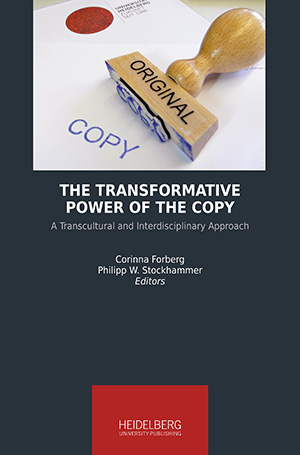Zitationsvorschlag
Lizenz (Kapitel)

Dieses Werk steht unter der Lizenz Creative Commons Namensnennung - Weitergabe unter gleichen Bedingungen 4.0 International.
Identifier (Buch)
Veröffentlicht
The Hegemony of the Copy: The Manuscript, the Book, and the Electronic Text in the Age of Limitless Digital Storage
Abstract This essay questions when the creative process leading to the original can be said to be complete. When does the series of a pupil’s botched attempts at perfection leading to “the” singular and unique object, text, tool, or artwork we recognise as the original expression of the master craftsman stop? Where is the cut-off point between the different versions (copies) of earlier inferior iterations in the gestation process that lead to the original, and final, superior original? This essay chiefly examines the manner in which text has been copied and stored in one particular type of object, namely that of the book, in order to provide some fairly well-known arguments regarding pre-mechanical as well as mechanical reproduction. In particular, it examines the differences between manuscript culture and print culture as we see them expressed in the production (and reproduction) of master copies and subsequent copies, of handwritten manuscripts, and mechanically printed books. Finally, it asks what the impact of digital memory and digital copying has had in terms of our current conception of copy and original and, in particular, examines the manner in which an increase in memory storage capacity can be seen to go hand in hand with digitisation’s increased role in diluting the differences between original and copy—not only in the excessive copying of the original, but in the creative process itself. For in a world in which objects, information, and text can be copied cheaply in vast quantities, and to a degree of verisimilitude that even the creator of such may no longer know the difference, does it make sense to speak of a distinction between the two any longer? Has the copy turned original, and the original turned copy? How do we discern between the two in a world in which all “copies,” the master copy as well as copies of the master copy, are indiscernible?
Keywords Artefact, aura, authenticity, book, copy, deletion, forgetting, frailty, manuscript, memory, mimesis, original, replica, safekeeping, text






